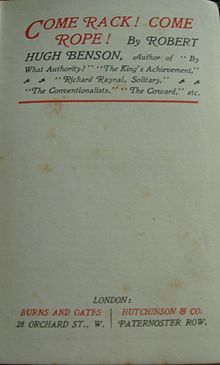Leonie Martin: A Difficult Life by Marie Baudouin-Croix, translated by Mary Frances Mooney, 157 pages
This blog is the home of the St. Louis Public Library team for the Missouri Book Challenge. The Missouri Book Challenge is a friendly competition between libraries around the state to see which library can read and blog about the most books each year. At the library level, the St. Louis Public Library book challenge blog is a monthly competition among SLPL staff members and branches. For the official Missouri Book Challenge description see: http://mobookchallenge.blogspot.com/p/about-challenge.h
Wednesday, August 20, 2025
Leonie Martin
Saturday, July 1, 2023
Early History of Glastonbury
The Early History of Glastonbury by William of Malmesbury, translated by John Scott, 83 pages
Friday, May 26, 2023
Song of Bernadette
The Song of Bernadette by Franz Werfel, translated by Ludwig Lewisohn, 575 pages
Monday, September 26, 2022
Man For All Seasons
A Man For All Seasons by Robert Bolt, 163 pages
Wednesday, May 11, 2022
Birgitta of Sweden
Birgitta of Sweden: Life and Selected Revelations by St Birgitta of Sweden and others, translated by Albert Ryle Kezel, 235 pages
Monday, May 24, 2021
Blessed Charles of Austria
Blessed Charles of Austria: A Holy Emperor and His Legacy by Charles Coulombe, 374 pages
Wednesday, March 31, 2021
Tales of the Early Franks
Tales of the Early Franks: Episodes from Merovingian History by Augustin Thierry, translated by MFO Jenkins, 166 pages
Saturday, December 5, 2020
Polyeuctus
Thursday, October 1, 2020
Before Church and State
Before Church and State: A Study of Social Order in the Sacramental Kingdom of St Louis IX by Andrew Willard Jones, 454 pages
Monday, August 3, 2020
Life of Saint Teresa of Avila
Tuesday, July 16, 2019
Monastic Life at Cluny
 Monastic Life at Cluny 910-1157 by Joan Evans, 130 pages
Monastic Life at Cluny 910-1157 by Joan Evans, 130 pagesThursday, April 18, 2019
Devotional Writings
Saturday, October 13, 2018
Ecclesiastical History
Tuesday, October 9, 2018
Ecclesiastical History
Saturday, December 9, 2017
Man of the Beatitudes
Monday, September 18, 2017
Come Rack! Come Rope!
 Come Rack! Come Rope! by Robert Hugh Benson, 377 pages
Come Rack! Come Rope! by Robert Hugh Benson, 377 pagesMonday, June 26, 2017
Jerome
Wednesday, May 31, 2017
Murder in the Cathedral
Monday, May 8, 2017
Edmund Campion
Monday, April 24, 2017
Dialogue of St Catherine of Siena
 The Dialogue of the Seraphic Virgin Catherine of Siena, Dictated by Her, while in a State of Ecstasy, to Her Secretaries and Completed in the Year of Our Lord 1370, Together with an Account of Her Death by an Eyewitness by St Catherine of Siena and others, 344 pages
The Dialogue of the Seraphic Virgin Catherine of Siena, Dictated by Her, while in a State of Ecstasy, to Her Secretaries and Completed in the Year of Our Lord 1370, Together with an Account of Her Death by an Eyewitness by St Catherine of Siena and others, 344 pagesThe full title of the Dialogue is most of the context provided in this edition - the brief introduction is primarily concerned with the spiritual state of Italy, Christendom, and the saint rather than a true biography of the author or commentary on the text. That text is a transcription of conversations St Catherine had while in an ecstatic state with the first two Persons of the Trinity. None of the voices - those of God or that of the saint - ever descends into the kind of babbling emotionalism popularly associated with ecstasy - they speak clearly, rationally, and, on the part of God, with a commanding authority. There is not even a trace of self-aggrandizement - St Catherine is not interested in her status as the mouthpiece of the Almighty, but with how she - and we - can draw closer to Him. The result is an eminently practical guide to the spiritual life, showing "clearly in each state the means of cutting away imperfection and reaching perfection, and how the soul may know by which road she is walking and of the hidden delusions of the devil and of spiritual self-love."








